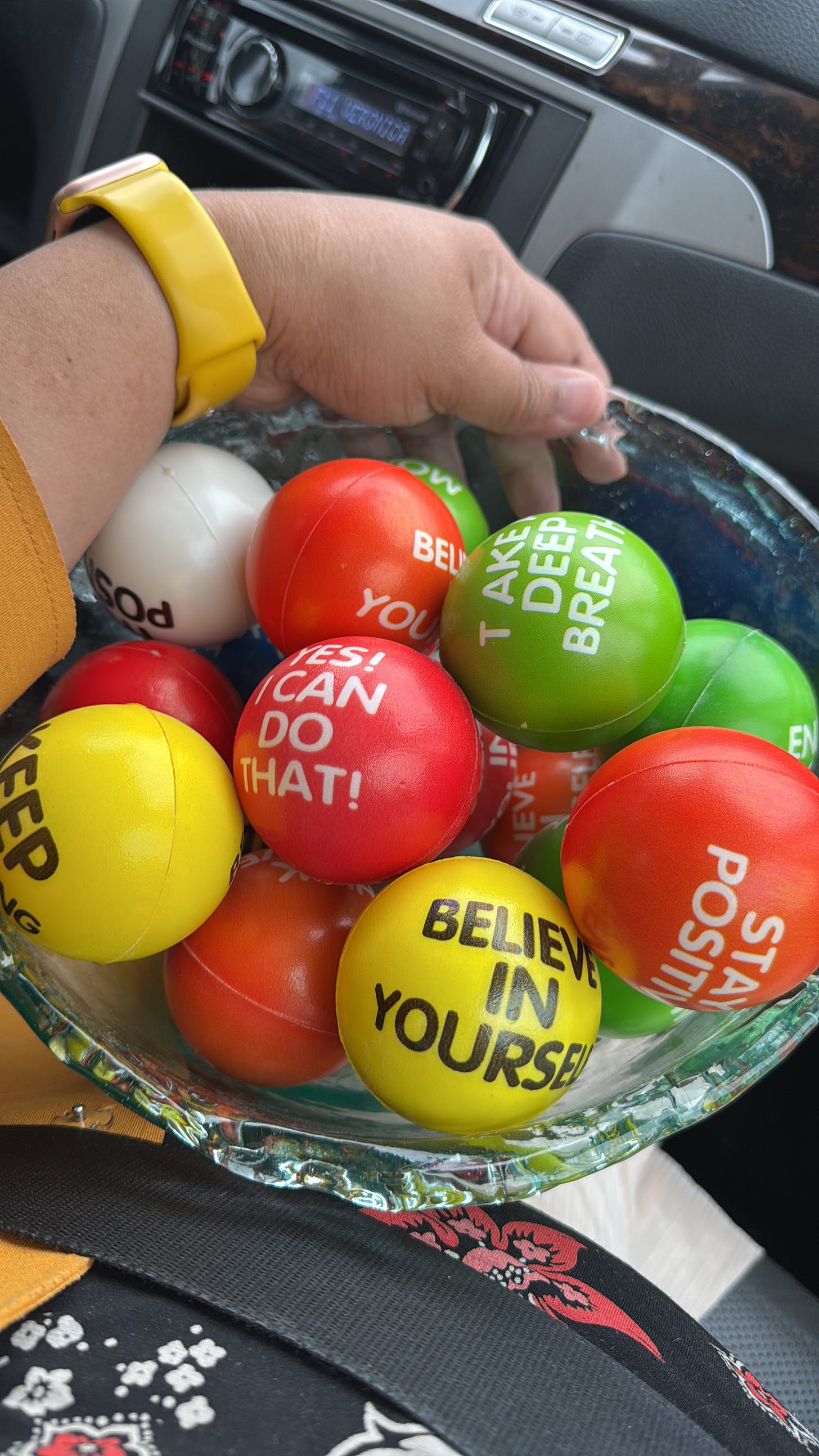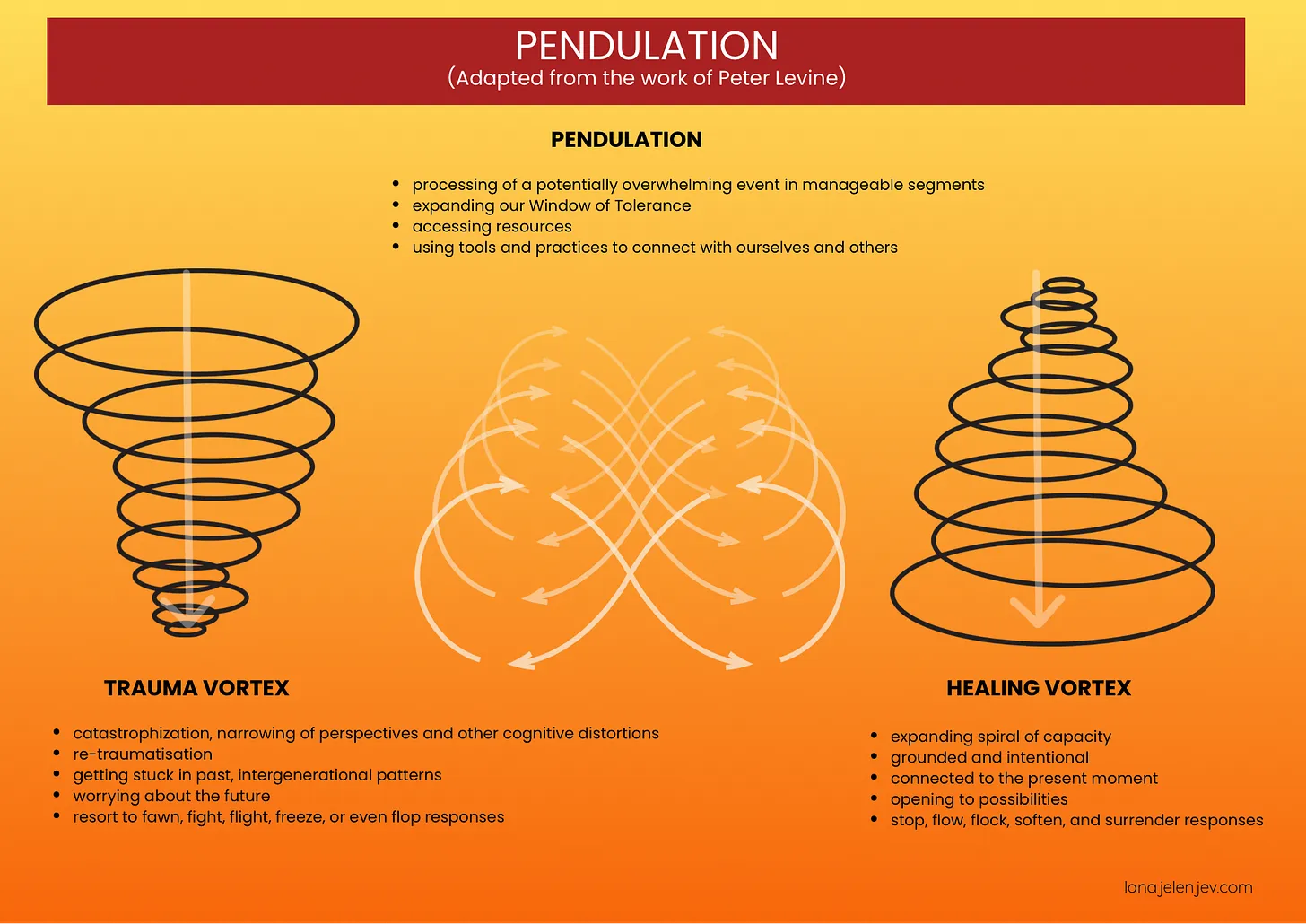A few days ago, I took a courageous step to work on my dental health and get it in order. If you know me, you'll know that I have an extreme fear of dentists. This came from a childhood experience of undergoing a root canal, which left me shaking and nervous whenever I go to the dental clinic.
Even just writing about it, I am feeling anxious already.
Last year, I survived not one, but three near-death experiences. That kind of reckoning teaches you something urgent: your life—your body—is not a thing to be neglected. It’s not a thing to put off for tomorrow.
So there I was, crossing that threshold of moving past the fear and doing it anyway. I opted to do the dental treatments under anesthesia. It costs more, yet it would lessen the anxieties and trauma that I have in undergoing dental procedures.
What I decided to do was to approach the period differently. I knew I would feel out of control and unsure of what would happen. These can then trigger a rampaging of thoughts and anxiety inside me.
I made a conscious decision: if I was to enter a space of rupture, I would do so prepared, intentional, and resourced.
I knew being in that clinic could deeply unravel me. I anticipated the powerlessness that comes with the reclined chair, the sterile smell, the buzzing of machines that mimic the sound of harm in my memory.
So I asked myself: Where do I have agency?
What is mine to shape, even in the smallest of ways?
This is how the stress balls came into the picture.
It sounds small. It is small. And yet it’s also monumental.
A soft object to squeeze when your body is in fight-flight-freeze.
A signal to yourself that you are not helpless.
A reminder that you can anchor, that you can bring a resource into a space that once only held fear.
I wanted to ensure that spaces of trauma can be spaces of healing, not just for me but also for the other people who are like me, intensely frightened and nervous of dental procedures. I wanted people to feel resourced by their environments. The clinic has amazing staff trained to address dental phobias. Yet there can be more that we can do to support people, especially when they are in places where they have experienced pain and suffering.
I knew healing is not just about what professionals do to us. It’s about what we co-create.
What if more of our medical spaces held tools for soothing?
What if environments where rupture happened became sacred grounds for reclaiming wholeness?
What if we each brought something—a gesture, a comfort object, a breath practice, a sensory anchor—to reframe the memory, to gently say:
"You are not who you were then. You are safe now."
Turning toward the rupture and tending them with care
You can use this reflection activity to explore how the spaces of rupture in your life can be gently reframed into places of healing, for yourself and possibly for others.
This is not an invitation to dive headfirst into pain. Instead, we practice pendulation—the gentle rhythm of moving between a place of activation (a memory, an emotion, a sensation) and a place of resourcing or ease.
We go back and forth, like waves, never staying submerged too long.
This is how we build capacity. This is how we heal without overwhelm.
1. Recalling the Space of Rupture
Take a few breaths to settle into your body. Feel the ground beneath you. Let your exhales be longer than your inhales.
When you feel ready, bring to mind a space that holds a painful memory—a physical place where something difficult happened. It might be a hospital room, a classroom, a waiting area, or a family setting. Just notice what arises. If it feels like too much, you can pause or return later.
Pendulation pause: Before going deeper, bring to mind a moment or space where you feel supported or grounded. This might be the touch of a loved one, the sound of the ocean, a place in nature, or a sensory object. Stay here for a few breaths. Let it soothe you.
Remember: You can always choose to shift your attention back to a place of calm, warmth, or connection.
Then, when ready, gently return to the reflection.
Journal prompts
What happened in that space? What did you feel, need, or long for at that moment?
What sensations or emotions show up in your body when you remember it?
What expectations were shared explicitly or implicitly in this space?
What would it mean if that space also holds healing, not to erase the pain, but to expand its story?
2. Reclaiming agency, reimagining the environment
From this place of groundedness, ask yourself:
What would support have looked like for me in that space?
What sensory elements—sounds, textures, objects—might have made me feel safer, calmer, more seen?
Is there something I can do now to symbolically or practically change how I relate to that place?
You might visualize bringing a comforting object into that memory, or imagine the presence of someone who advocates for you.
Pendulation pause: Return to your body. Place one hand on your heart or belly. Notice the sensation of your breath. Invite a word of comfort to arise—“soften,” “ease,” “held,” “breathe.”
3. Remembering ourselves as resourcers
You are not just someone who needs resourcing.
You are someone who is already a living, breathing resource in the world.
What spaces around you might be rupturing places for others?
How can you contribute—through kindness, tools, design, presence, or even just gentleness—to make them more healing for someone else?
Remember: even small offerings—like a soft object to hold, a smile, or a question asked with care—can shift the atmosphere. Settled bodies, settle bodies.
PAGMUMUNI-MUNI (Deep introspection)
What did I notice about my body's response as I moved between the memory of rupture and moments of resourcing?
What small act of care—toward myself or another—am I now more resourced to offer, after doing this practice?
How might I continue tending to this space of rupture with compassion, curiosity, and agency—without forcing a timeline for healing?
Dear readers,
How was this for you to receive? Let me know in the comments or send me a private message. I am curious how these practices of pendulation and resourcing are resonating with you.
A small request and a nudge, if this piece gave you something to think about, please do share it with a loved one. Engage in conversations with them about spaces of rupture and what we can collectively do to create these as spaces of healing, not only for ourselves but also for others.
In kapwa,
Lana



